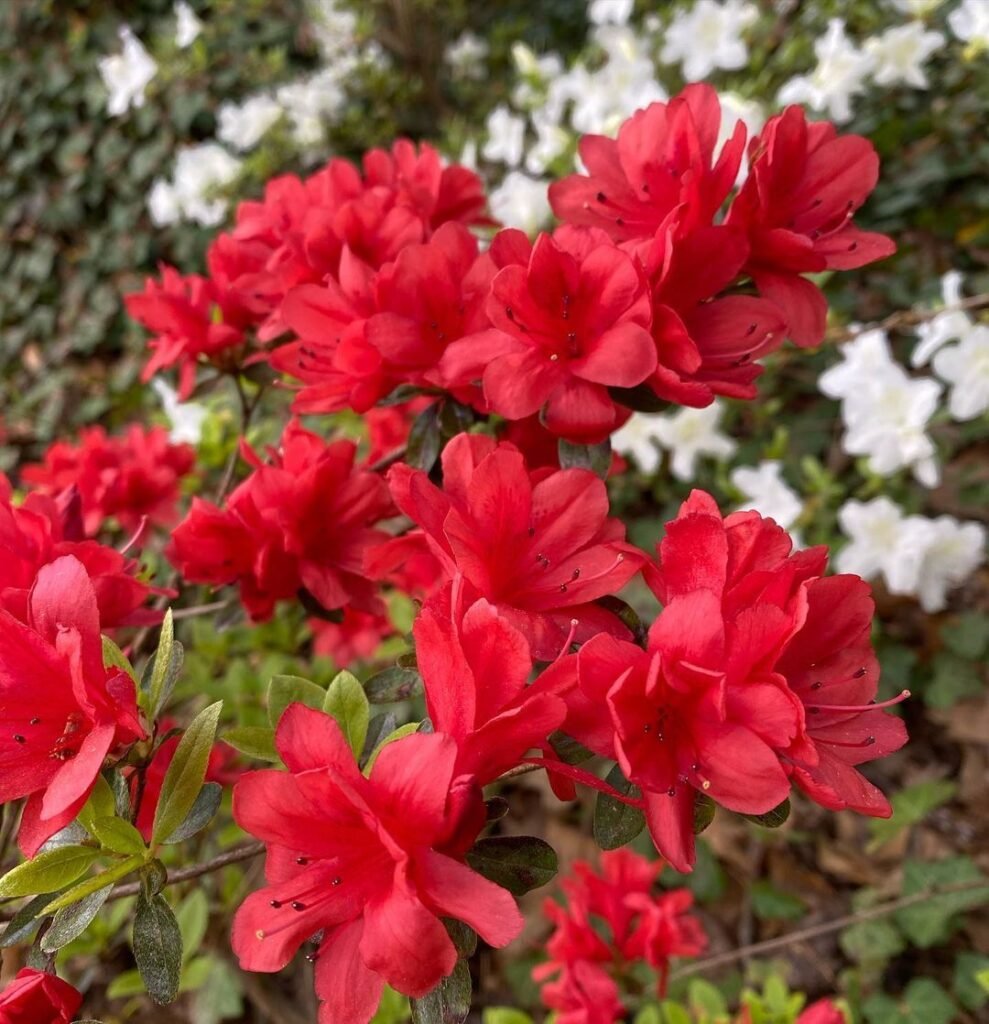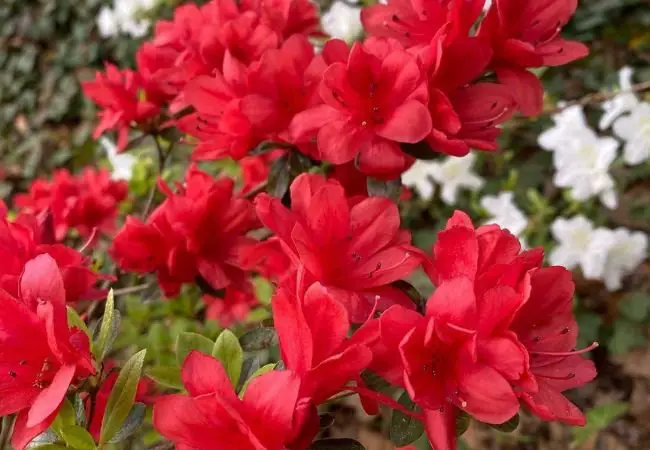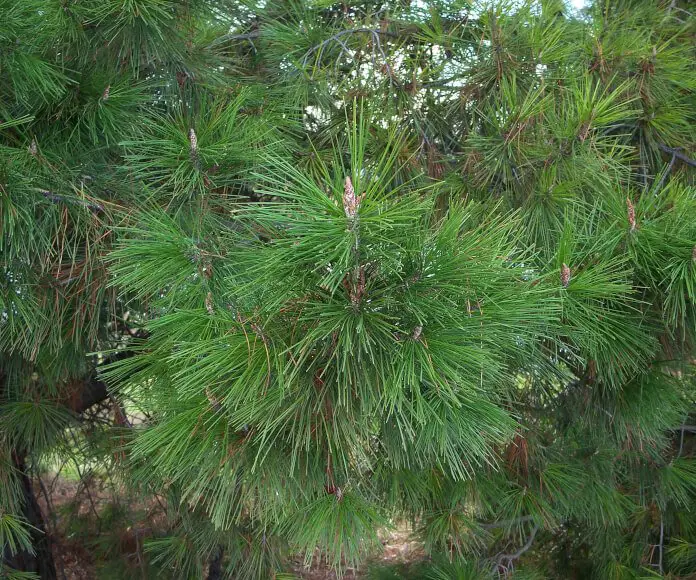Discover how to cultivate and maintain beautiful red azaleas. Learn expert tips on planting, pruning and pest control to create a dazzling garden display. Perfect for both novice and experienced gardeners.
Red azaleas are striking flowering shrubs known for their vibrant blooms in shades ranging from bright scarlet to deep crimson. They thrive in partial shade, prefer acidic soil with a pH between 4.5-6.0 and require well-draining, organically rich soil. Regular watering, proper pruning and protection from harsh sunlight are key to their health and abundant flowering.
Introduction to Red Azaleas

As a horticulturist with over two decades of experience in ornamental shrubs, I’m thrilled to share my expertise on growing and caring for red azaleas. These eye-catching plants can transform any garden into a spectacular showcase of color.
Understanding Red Azaleas
Red azaleas belong to the genus Rhododendron and are part of the Ericaceae family. They are renowned for their showy clusters of flowers that bloom in spring, creating a stunning display in gardens and landscapes.
For more information on azalea taxonomy, visit the American Rhododendron Society’s classification page.
Popular Red Azalea Varieties
- ‘Hino-crimson’: A dwarf variety with vibrant red flowers
- ‘Stewartstonian’: Known for its dark red blooms and good cold hardiness
- ‘Red Formosa’: Features large, frilly red-purple flowers
- ‘Girard’s Hot Shot’: Offers brilliant red-orange blossoms
- ‘Red Ruffles’: Displays ruffled, deep red double flowers
Planting Red Azaleas
Timing
Plant azaleas in spring or fall when temperatures are mild. This allows the plants to establish roots before extreme weather conditions.
Location Selection
Choose a spot with:
- Partial shade (morning sun and afternoon shade is ideal)
- Protection from strong winds
- Well-draining soil
Soil Preparation
Prepare the soil by:
- Testing the pH (aim for 4.5-6.0 for optimal growth)
- Adding organic matter like peat moss or compost
- Ensuring good drainage to prevent root rot
For more on soil preparation for azaleas, check out Clemson Cooperative Extension’s guide.
Planting Process
- Dig a hole twice the width of the root ball and as deep
- Place the plant in the hole, ensuring the top of the root ball is level with the soil surface
- Backfill with soil, water thoroughly, and add a layer of mulch
Caring for Red Azaleas
Watering
- Keep soil consistently moist but not waterlogged
- Water deeply once a week, more often in hot, dry weather
- Use a soaker hose or drip irrigation for efficient watering
Fertilizing
- Apply a slow-release, acid-forming fertilizer in early spring
- Avoid over-fertilizing, which can lead to excessive foliage growth at the expense of blooms
- Use organic mulch to provide nutrients and maintain soil acidity
For fertilizer recommendations, visit University of Georgia Extension’s azalea care page.
Pruning
- Prune immediately after flowering to shape the plant and control size
- Remove dead, damaged, or crossing branches
- Avoid pruning in late summer or fall, as this can affect next year’s blooms
Pest and Disease Management
Common issues include:
- Lace bugs: Cause stippling on leaves; control with insecticidal soap
- Petal blight: Remove and destroy affected flowers
- Root rot: Ensure good drainage and avoid overwatering
For more information on azalea pests and diseases, visit NC State Extension’s azalea problem page.
Winter Care
- Apply a thick layer of mulch around the base of the plant
- Protect from winter winds with burlap screens if necessary
- Avoid fertilizing late in the season to prevent new growth vulnerable to frost
Propagation
To multiply your red azaleas:
- Take softwood cuttings in late spring or early summer
- Dip cuttings in rooting hormone and plant in a mix of peat and perlite
- Keep cuttings moist and in a bright, indirect light location until rooted
For detailed propagation instructions, check out The American Rhododendron Society’s propagation guide.
Companion Planting
Enhance your red azalea display by pairing them with:
- Shade-loving perennials like hostas or ferns
- Other acid-loving plants such as camellias or Japanese maples
- Spring-flowering bulbs for a layered effect
Growing red azaleas can add a vibrant splash of color to your garden or landscape. With proper care, including the right soil conditions, adequate water, and timely pruning, these stunning shrubs will reward you with magnificent blooms year after year. Remember, the key to success lies in providing the acidic soil they crave and protecting them from harsh afternoon sun. Whether you’re an experienced gardener or just starting out, red azaleas offer a rewarding and beautiful addition to any garden.
For more comprehensive information on azalea cultivation, visit the Azalea Society of America’s website.
For more gardening tips and plant care guides, visit usagardenhub.com.






